Former prodigy Andrey Esipenko overcame the reigning World Junior Champion Marc’andria Maurizzi for a third win in four games and emerged as the sole leader in the open section. There was excitement everywhere, from Erigaisi’s king walk to b4 to the theoretical duels in the Slav and Volokitin’s touch-move rule violation. In the women’s section, Anna Muzychuk missed a huge chance to win a fourth game after spoiling her excellent opening preparation e against former World Champion Tan Zhongyi. Bibisara Assaubayeva and Rameshbabu joined the leaders with convincing wins
The Slav Defence is one of the most popular openings. Its popularity comes from its versatility, as it allows Black to choose from several set-ups according to their tastes.

However, White also has a say when it comes to the Slav. The Exchange Variation, for example, is not as dull as it may sound, but there is also the so-called slow Slav, where White intentionally slows the thigns down, thus avoiding the sharp options like the Semi-Slav, the Botvinnik Variation or the Anti-Moscow gambit.
In round four of the FIDE Grand Swiss, there was an unexpected occurrence of the slow Slav on the top boards.
On board eight, Radoslaw Wojtaszek chose the slow Slav against Anish Giri. Then, curious things started to happen early on. In the position after 1.d4 d5 2.c4 c6 3.Nf3 Nf6 4.e3, Black has three main moves, and these are 4…Bg4, 4…Bf5 and 4…e6. Giri chose the first one.
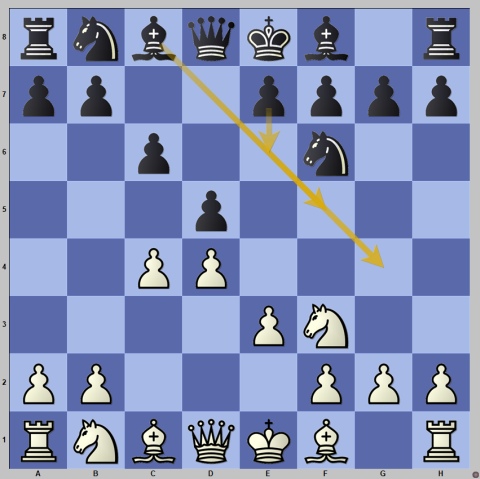
Interestingly, Wojtaszek was on Team Anand in 2008 when Anand played the World Championship match against Kramnik. The Slav Defence was Anand’s main weapon in that match, which he won thanks to excellent preparation in the sharpest lines of the Meran. While preparing the Slav in general, the team considered the slow Slav as well, and their intention was to play the line with 4…Bg4!
Fast-forward to 2023, and here we see Wojtaszek on the white side of the line he prepared as Black in 2008!
He continued with 5.Qb3 Qb6 6.Ne5 and they followed mainstream theory for a while. Suddenly, White got a great chance.
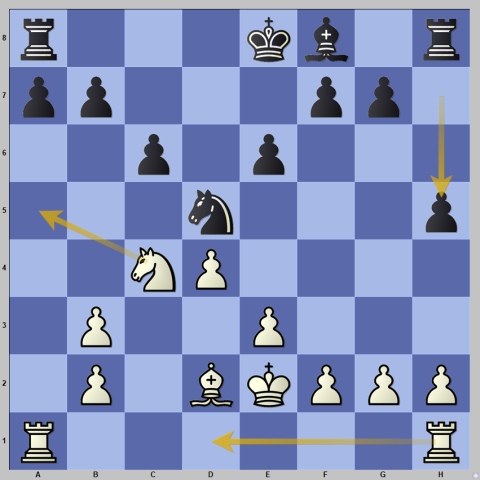
Black’s last move 15…h5? was positionally sound – stopping possible White expansion on the kingside, but it turned out to be too inconcrete. Possibly, Giri was lulled by the “slowness” of the Slav and didn’t expect any dynamic factors. Luckily for him, so did his opponent as he continued with the “slow” 16.Rhd1? missing a great chance to put his opponent under tremendous pressure with 16.Na5! Rb8 17.e4 Nc7 18.Bf4 Kd7 19.Nc4 and Black is on the brink of defeat as White threatens Rxa7 and Ne5.
With this unexpected chance not taken, White couldn’t pose more problems, and the subsequent advance in the centre with e4 and d5 only led to simplifications and a draw.

On the next board, board nine, Hans Niemann chose the slow Slav against Richard Rapport. Black deviated quickly from the board he could easily see next to him and chose 4…Bf5. After 5.Nc3 e6 6.Nh4 Bg6 7.Qb3 Qc7, both players followed theory, and when it ended, a complex middlegame was on the board.
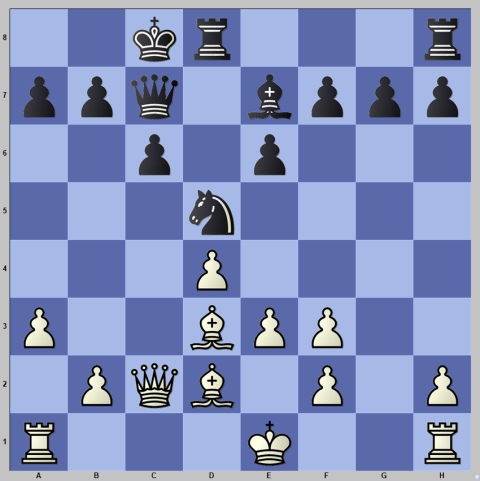
This is a rather typical situation in the slow Slav, where White’s pair of bishops is compensated by Black’s solid position and better pawn structure. It was a true slow Slav until the final moves before the time-control.
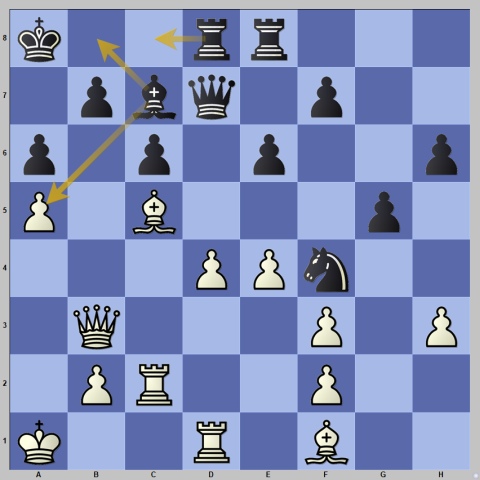
Instead of continuing to manoeuvre with 39…Rc8 or 38…Bb8, Rapport took the poisoned pawn on a5 and was swiftly punished after 39…Bxa5? 40.Qa4 Qc7 41.b4 Bb6 42.Bxa6! White transferred the rook to a2 and launched a decisive attack along the a-file.
Two more slow Slavs were played on boards 14 and 15.
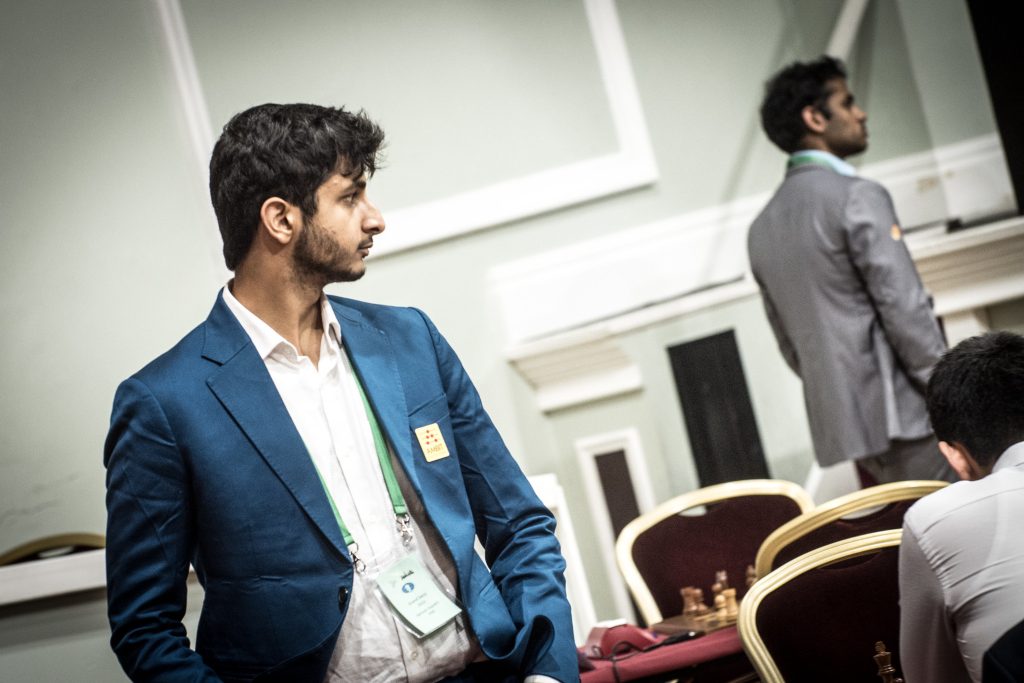
On board 14, Santosh Gujrathi Vidit decided to try to tame Alexey Shirov by slowing things down. Shirov played his usual choice against this line, 4….Bf5 5.Nc3 e6 6.Nh4 Be4 (deviating from Rapport’s 6…Bg6) 7.f3 Bg6. The idea of the move …Be4 is to provoke a slight weakening in White’s position with the move f3.
The game followed an earlier game by Vidit, played against Illya Nyzhnyk, and it was surprising to see Shirov not try to improve on that game and end up in the same inferior position as Nyzhnyk.
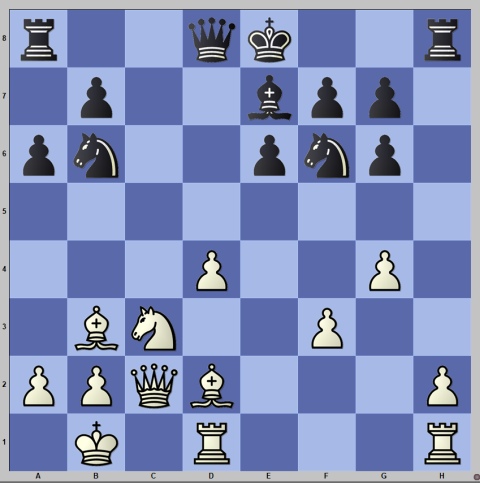
Black should have played …Nb6 before taking …c5xd4, and now both Shirov and Nyzhnyk found themselves in an inferior position. Black’s main problem is the lack of safe shelter for the king – if it stays in the centre, then f4-f5 is coming, and if it goes to the kingside, then h4-h5 is dangerous. Shirov’s time management, spending almost an hour to reach a position that his opponent had played earlier, perhaps indicated that his preparation wasn’t of the highest quality.
Shirov eventually deviated from the game Vidit-Nyzhnyk on move 22, but he was already in a very bad position. Vidit won without too many problems.
On board 15 Nikita Vitiugov and Chithambaram Aravindh followed the game Niemann-Rapport for a few moves before deviating with 7.Nxg6 hxg6 8.Bd2 Nbd7.

In this popular position, White chose the relatively rare 9.cxd5, transposing to a Carlsbad structure. His intentions were aggressive, as after 9…exd5 10.Qc2, he prepared long castling. Black wasn’t very precise, and White quickly built up an attack with f3 and g4. However, Vitiugov misplayed and rushed with g5, allowing Black to block the kingside with …Nh5, then it was Black who started to attack at the queenside! He achieved a winning position, but then…
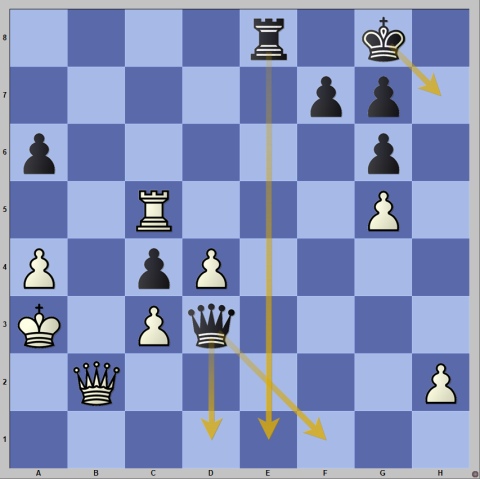
Instead of 32…Qf1 or 32…Qd1 or even the prophylactic 32…Kh7, Black rushed with 32…Re1? when after 33.Qb8 Kh7 34.Qg3! suddenly, it was White who was better! The threat of mate with Rc8 forced Black to go back with the rook when Black’s attack was gone, and White could go on to collect the c4-pawn and advance his central pawns. Vitiugov exchanged rooks and entered a queen endgame, but now it was his turn to be imprecise.
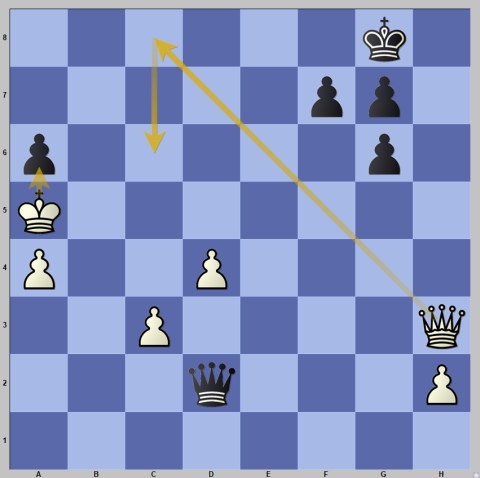
White already gave checks on c8 and h3, but here he missed that after the immediate 44.Kxa6? Black has the excellent 44…f5! cutting off the white queen and advancing his own passed pawn. After this, the position is objectively a draw, and Black managed to reach it. The winning manoeuvre was 44.Qc8 Kh7 45.Qc6! supporting the advance of the d-pawn.
A truly topsy-turvy game.
To sum up the overall score in the slow Slavs, White won 3-1.
On board one, Fabiano Caruana was surprised early on by Javokhir Sindarov (who yesterday beat Aronian) in the King’s Indian Defence. It seems that nowadays, everybody plays the Be2, Be3 system against the King’s Indian and Caruana wasn’t an exception. Then, after a transposition to the Benoni with …c5, Black sprung his surprise.
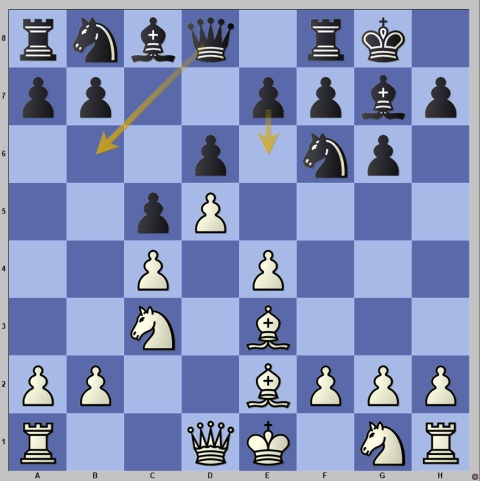
Instead of the usual 7…e6 Black played the practically unknown 7….Qb6, which, understandably, made Caruana think for a while. He came up with 8.Rb1 and here the novelty 8…Qa5 was played.
Both players started to spend time as the position was unexplored and complex. The critical moment in the game came after Black’s 17th move.
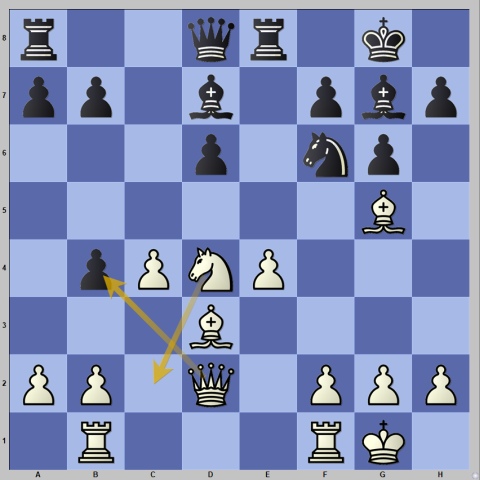
White took the pawn on b4, but after 18.Qxb4?! Qb6! Black had enough counterplay and held the draw. Instead of the hasty capture White should have played 18.Nc2! and trying to take the pawn with the knight. If Black then defends the pawn with 18…a5, then after 19.f3 White has a stable advantage thanks to his superior pawn structure. A rare case of Caruana’s misevaluating a position!

On board two, Alexandr Predke introduced a novelty against Arjun Erigaisi as early as move 11 in the standard position from the Semi-Tarrasch.

Here White has a wide choice, 11.Bc4, 11.Rc1, 11.Be2, 11.Bd3, 11.Bb5, 11.Rd1, 11.h4, 11.Rb1, to name just the most popular ones.
What did Predke come up with? 11.h3, obviously.
After natural moves by both sides White executed the thematic break d5 exd5, e5, where White sacrifices a pawn, but obtains attacking chances on the kingside.
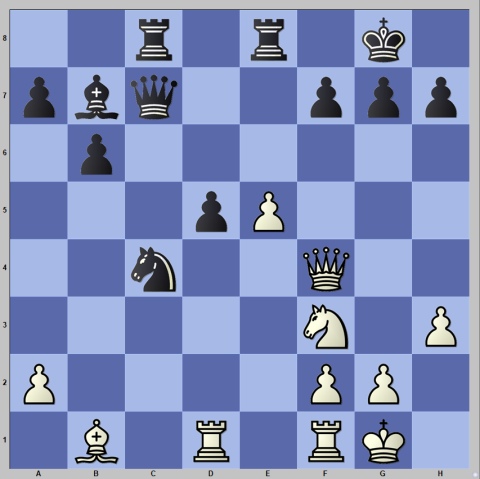
The engine gives 0.00, indicating that White has compensation for the pawn.
Two moves later, Predke went for the throat.
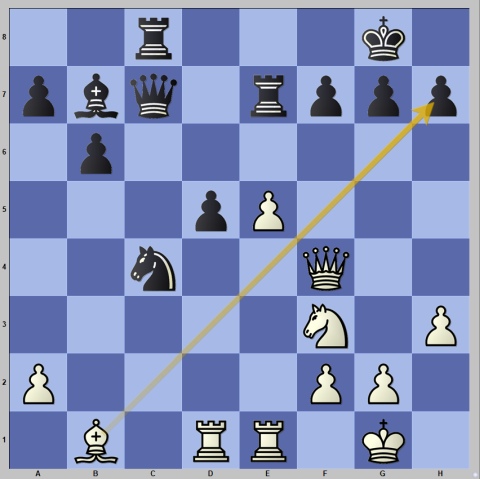
The engine is quite happy to see the sacrifice 21.Bxh7, easily refuting White’s attack, but for a human in practice, things are not easy at all. Erigaisi defended well for nine moves, but in the critical moment, he decided to force a draw.
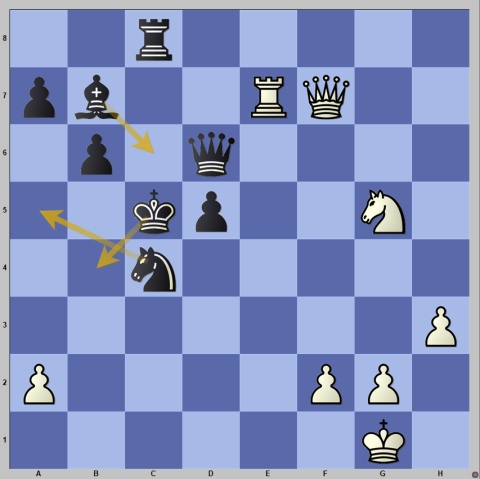
Here 30…Bc6 or 30…Na5 were still quite advantageous for Black (the engine says it’s winning), but Erigaisi went for 30…Kb4 31.Rd7 Nd2 (31…Qe5 would have still been good) 32.Rxd6 Rc1 with a perpetual check …Nf1-d2.
On board three, Samuel Sevian and Erwin L’Ami played a dynamic game in the Ruy Lopez, where White missed an accidental winning chance in time trouble. Except for that chance, L’Ami’s defence in a tricky position was beyond reproach.
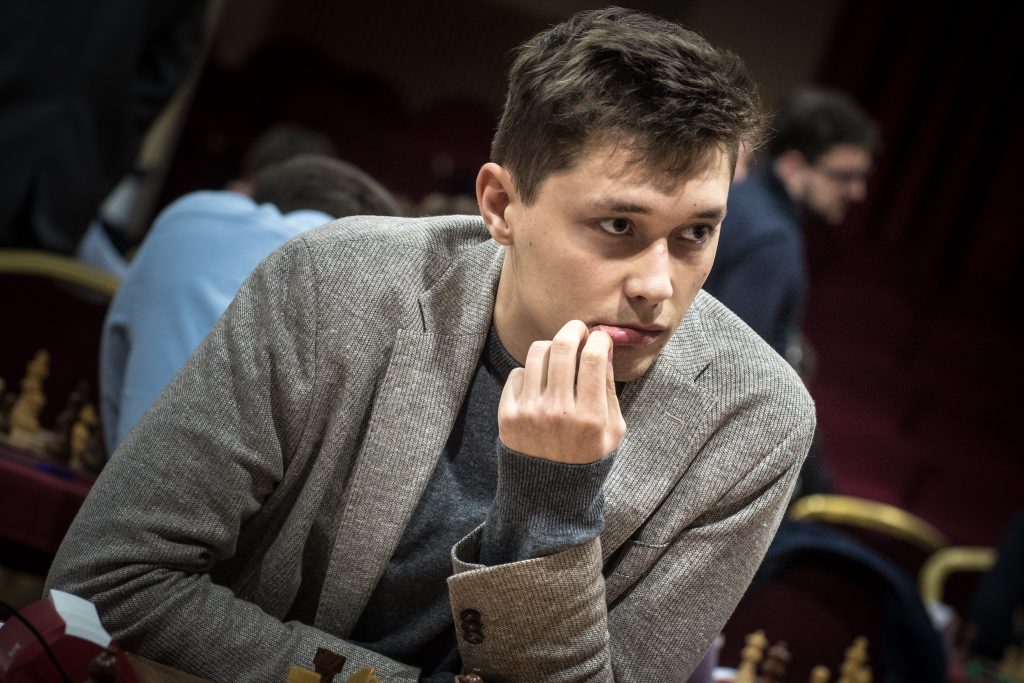
On board four, Andrey Esipenko scored a notable win with the black pieces in the duel with the reigning World Junior Champion Marc’andria Maurizzi. In a complex Ruy Lopez, Black outplayed his opponent in a convincing fashion. This win made Esipenko the sole leader of the tournament.
Hikaru Nakamura scored his second win in a row using the Tarrasch Defence against Amin Tabatabaei.
Speaking of the h-pawn, the novelty of the round should definitely go to Jorden Van Foreest. In his game against Frederik Svane, he chose the Catalan, and in the so-called open variation of the Catalan, he uncorked…
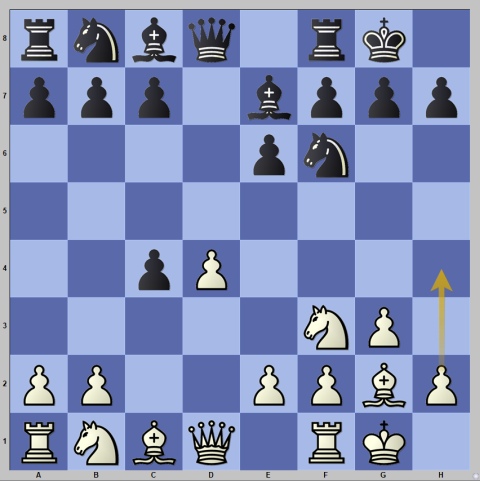
7.h4!?, what else!
An unfortunate moment happened in the game between Andrei Volokitin and Vincent Keymer. The position was a draw, but then the following happened.
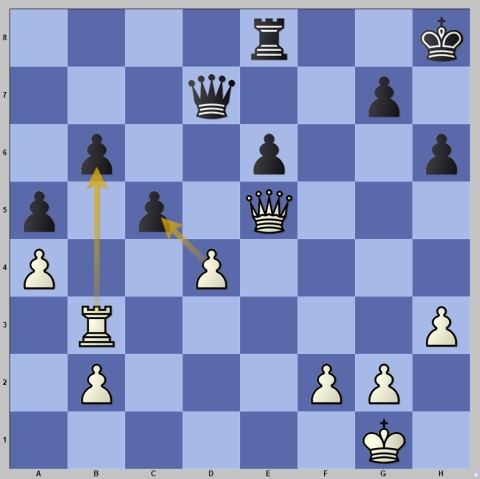
White’s intention was to take the pawn on b6, but instead, he picked up the pawn on c5! Then he played 35.Rxb6, but Keymer called the arbiter and explained the situation. The touch-move rule had to be enforced, so Volokitin had to take the pawn on c5 and immediately resigned as he loses the rook after 35…Qd1.

In the women’s section, the derby on board one between Anna Muzychuk and Tan Zhongyi was an exciting theoretical duel where White caught her opponent in a very deeply prepared line. The curious thing is that Muzychuk had two games in this line, played in back 2018, and Tan Zhongyi must have hoped that her improvement would keep her safe.
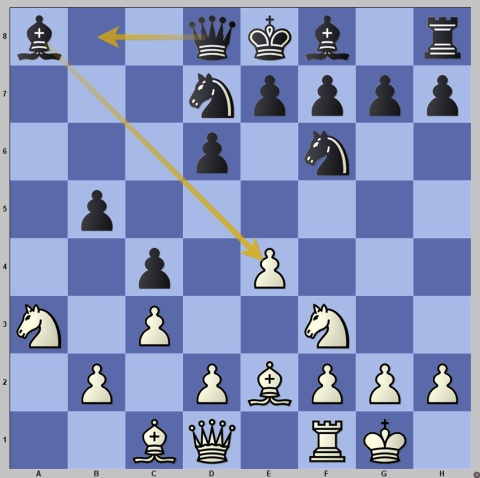
Muzychuk’s previous games against Pia Cramling and Peter Svidler saw the capture on e4, which is dangerous after Nxb5, but both times Black survived.
Tan Zhongyi deviated with 11…Qb8, the engine’s preference. The surprise came on the next move because after White’s best move 12.d3 Black should have played 12…e6, and yet Tan Zhongyi went for the risky and not very good 12…cxd3?! 13.Bxd3 Bxe4?! and after 14.Bb5 e5 15.Re1 White was almost winning!
A very strange case of a very bad preparation from the former World Champion. However, Muzychuk’s problems with her technique, which were also visible in the previous two rounds, where she allowed saving chances to her opponents Tsolakidou and Bulmaga, finally caught up with her. This time Tan took advantage of her mistakes and saved the game.
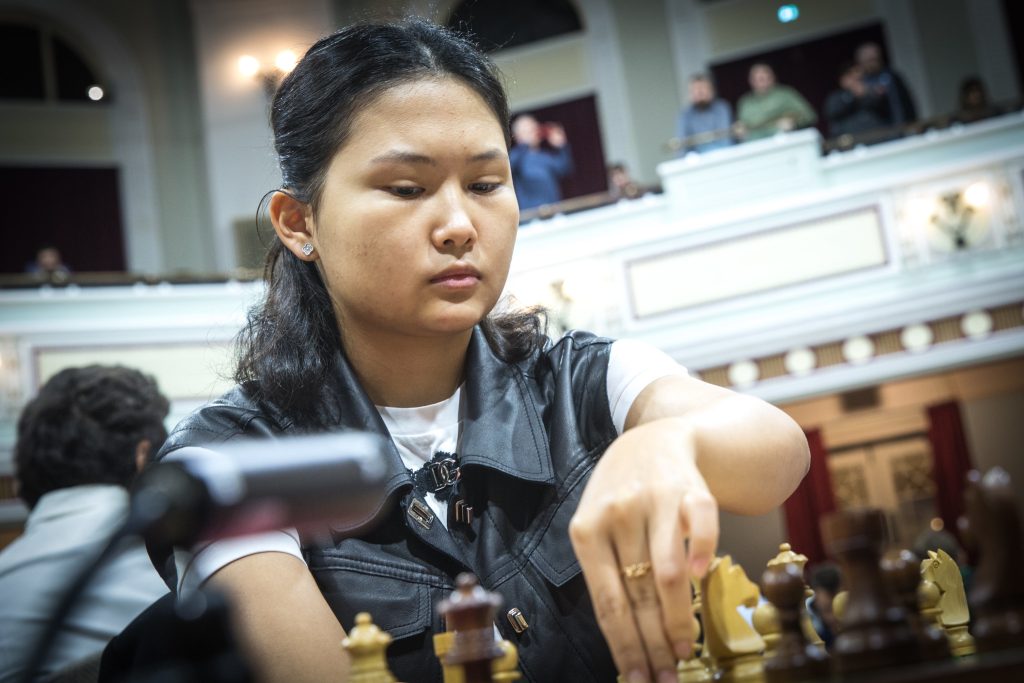
On board two Bibisara Assaubayeva chose a Reti set-up against Elisabeth Paehtz’s Grunfeld development. Black didn’t have problems out of the opening but somewhat prematurely gave up the pair of bishops. White used the bishops to open the game and started pressuring Black.
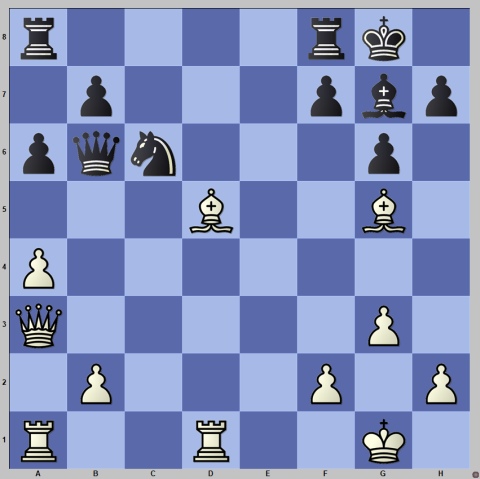
Black found it very difficult to defend and decided to transpose to a position with opposite-coloured bishops at the expense of damaging her structure. It didn’t help since White’s bishop on d5 was exerting tremendous pressure on the f7-pawn.
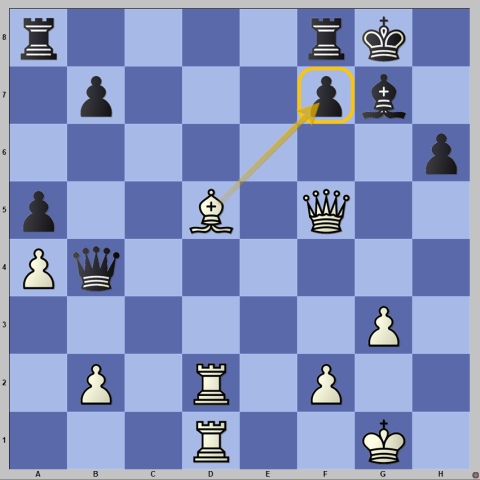
White confidently converted her advantage without allowing any chances.
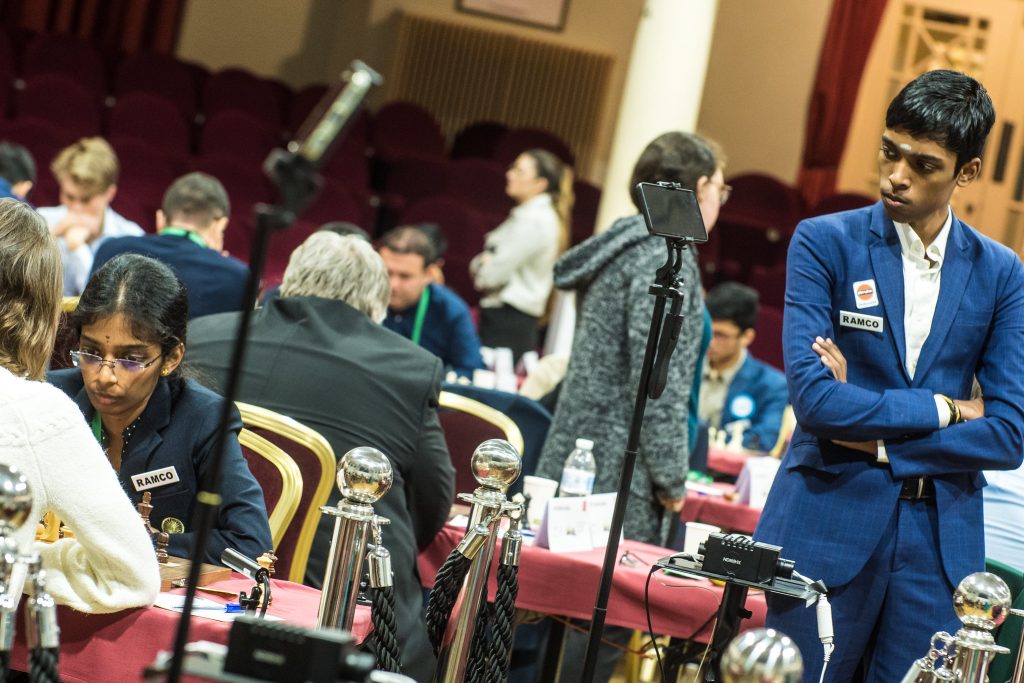
On board three Mariya Muzychuk suffered a disaster against Rameshbabu Vaishali. In the Rossolimo Sicilian, the players followed theory until move 14, when it appears that Muzychuk couldn’t remember her preparation.
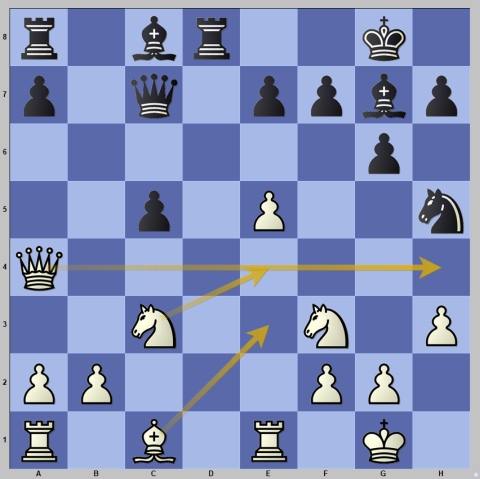
Instead of 15.Be3 or 15.Ne4 tested previously, White played 15.Qh4? and after 15…Bb7 was immediately in trouble! The pawn on e5 is under attack (Black threatens …Bxf3) and Black’s pieces quickly come to life!
Muzychuk lunged forward with 16.e6, but after 16…f5 17.Bg5 Bxf3 18.gxf3 Qb7 with a double attack on b2 and f3 the end was nigh. White took the pawn on e7 but allowed …Qxf3 and …Rd2 when all she could do was to resign three moves later.

Top seed Aleksandra Goryachkina won her second game in a row and is only half a point behind the leaders, but so is 18-year-old Meruert Kamalidenova, who delivered a mate with bishop and knight against Polina Shuvalova.

There is a sole leader in the open event, and that is Andrey Esipenko, with 3.5/4. He is closely followed by a bunch of players sitting on 3/4. In the women’s section, four players share the lead with 3.5/4: Tan Zhongyi, Anna Muzychuk, Rameshbabu Vaishali and Bibisara Assaubayeva, with five players trailing by a half-point.
Fans can follow the Grand Swiss 2023 by watching live broadcasts of the event on FIDE Youtube and Twitch with expert commentary by GM David Howell and IM Jovanka Houska.
Round 5 starts tomorrow at 14:30 PM local time.
Written by GM Alex Colovic
Photos: Anna Shtourman
About the event:
The FIDE Grand Swiss and FIDE Women’s Grand Swiss 2023 takes place from the 23rd of October to the 6th of November at the Villa Marina, Douglas, Isle of Man.
Both tournaments are part of the qualifications for the World Championship cycle, with the top two players in the open event qualifying for the 2024 Candidates Tournament and the top two players in the Women’s Grand Swiss qualifying for the 2024 Women’s Candidates.
Eleven rounds will be played under the Swiss System, with 164 players participating from all continents: 114 in the Grand Swiss and 50 players in the Women’s Grand Swiss.
The total prize fund is $600,000, with $460,000 for the Grand Swiss and $140,000 for the Women’s Grand Swiss.
The first Grand Swiss was held in 2019 in the Isle of Man and was won by GM Wang Hao, who scored 8/11. The 2021 edition was moved from Isle of Man to Riga due to Covid restrictions on the island and was won by GM Alireza Firouzja.
This is the second time that a Women’s Grand Swiss event will be held. The inaugural edition in Riga was won by GM Lei Tingjie.


